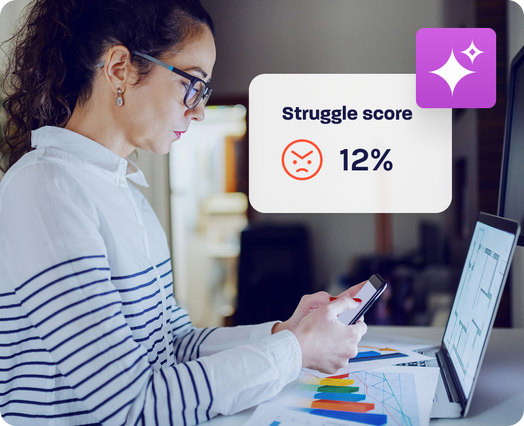
Why these three pillars are critical for mobile app CX
It’s no secret that in today’s business landscape, mobile rules the playing field: In 2019, people spent 90% of their time on smartphones in mobile apps. That makes customer experience (CX) on mobile apps essential to driving revenue and increasing brand loyalty – after all, 59% of customers will walk away from a brand after several bad experiences and 17% will leave after a single bad experience according to PwC.
Whether web, native or hybrid, customers that use an organization’s app are actively choosing to dedicate time and often share of wallet to a brand. In return, they demand that every mobile interaction is completely frictionless and devoid of problems with the user experience.
Download Now: Ultimate Guide to Successful Enterprise Mobile Apps
Any gaps between the experience customers want and the real-world experience they have on mobile apps causes abandonment. To develop, maintain and enhance mobile apps and close this gap, enterprises must focus on adopting the three central pillars of mobile app CX.
1. Base decisions on 100% of the data.
Many mobile app teams are familiar with analytics solutions that use predefined event tagging. With these solutions, only things that are tagged can be used to understand and improve mobile app experience. That means, for example, if a specific screen or event wasn’t tagged after a mobile app update, then data on that element isn’t available for analysis. That makes it difficult or impossible to understand why abandonments happen with untagged events.
To drive CX, mobile product owners, developers and marketers must capture 100% of sessions and 100% of session events. Doing so makes the difference between grasping in the dark and working in the full light of day. Tracking and analyzing all of the data requires capabilities like autonomous event tagging that ensure that every interaction in a mobile app journey – taps, reorientation, form entry, validation, AJAX calls and more – are captured.
2. Drive action with deeper mobile insights.
Mobile app development is a whole different ball game than web development. There’s a much wider variety of factors that impact the performance of new products or features, such as device types, operating systems and versions, app versions, battery and memory usage, network connections and more. Yet most mobile app analytics fall short of the full spectrum of information that enterprises require to prioritize fixes or enhancements and identify opportunities to increase CX.
What enterprises need is powerful visualization that makes the most critical insights for mobile apps immediately available. There are four capabilities that make this possible:
- Session replay: Watch what happens in an app in real time and see impacts on CPU, battery and memory usage, making it easy to reproduce crashes and understand the causes of struggles and abandonment.
- Interaction map: Gain a comprehensive picture of where users are spending time on each screen so that it’s apparent which elements are most popular (and could be enhanced to deliver better CX) or in need of repair.
- Journey analysis: See the flows users take within an app and understand which journeys are most common and where struggles on one screen impact abandonment on another.
- Mobile insight reports: View app performance details like crash analytics, network performance, engagement on each screen, devices and screens facing struggles, version adoption and impacts on performance, and memory, battery, CPU impacts by device and OS version.
Visualizations that showcase this data help overcome some of the most difficult questions that come up when deciding which mobile app updates should happen first.
3. Know where to focus by analyzing everything.
According to Forrester analysts Joana de Quintanilha and Maxie Schmidt, some of the most important CX indicators exist not at the end of customer journeys but within them. Tracking every element within a mobile journey allows organizations to understand where to prioritize efforts, which improvements will have the greatest impact on customers and which journeys aren’t performing as desired.
Artificial intelligence makes this possible by processing huge amounts of data and putting a spotlight on the events that negatively affect digital customer journeys. It puts struggle insights into context inside the entire user experience, instead of just a single screen. By isolating the most important events and any anomalies, the most meaningful and high-impact updates become clear.
These three pillars are central to creating a foundation for total CX. Adopting them empowers organizations to turn their web, native and hybrid apps into a competitive advantage by consistently delivering the experience customers want.
Want to learn more about how to improve mobile app CX? Check out our Ultimate Guide to Successful Enterprise Mobile Apps.








